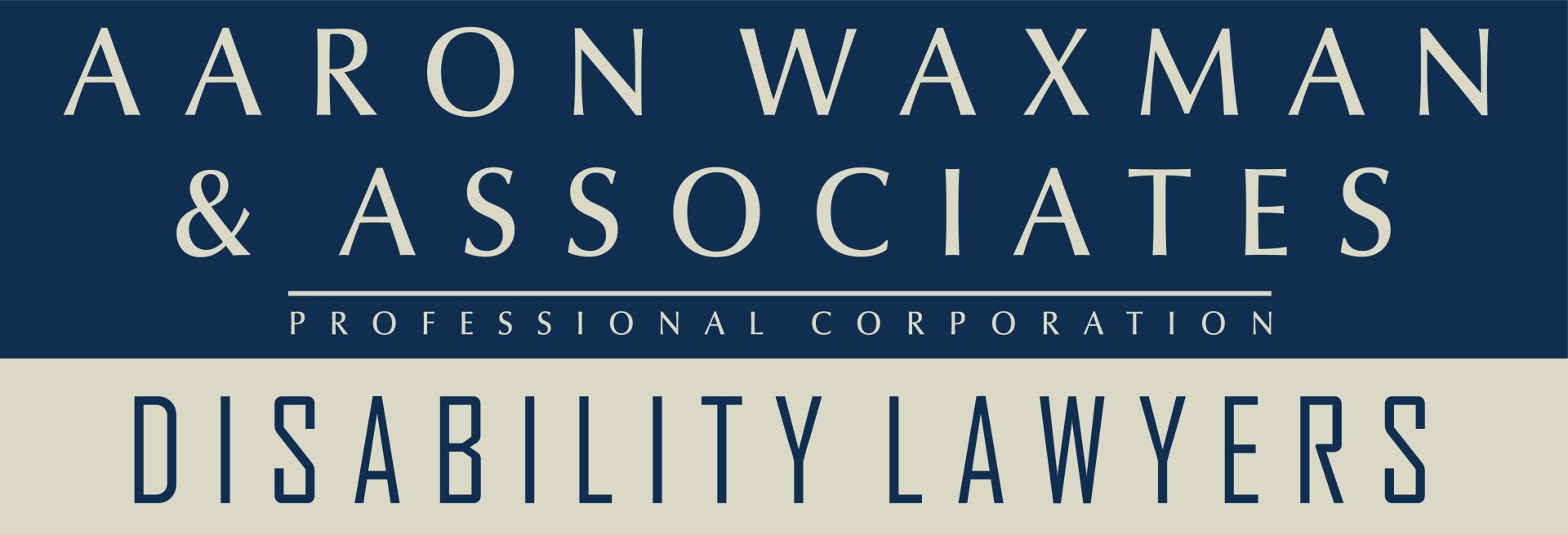Anxiety, Depression and Disability Claims

Anxiety and depressive disorders can cause a variety of symptoms which can make it difficult to function on a day to day basis.
Anxiety and depression affect many Canadians each year*.
This blog post will cover:
- What are Anxiety Disorders?
- What are Depressive Disorders?
- What you should know about Disability Claims for Anxiety and Depression
- Reasons your disability claim could be denied
- What you can do if your disability claim is denied
What are Anxiety Disorders?
Types of anxiety disorders include:
- Agoraphobia
- Generalized Anxiety Disorder
- Panic Disorder
- Social Anxiety Disorder
- Obsessive Compulsive Disorder
- Post-traumatic Stress Disorder
According to the Centre for Addiction and Mental Health, anxiety disorders share features of irrational and excessive fear, apprehensive and tense feelings and difficulty managing daily tasks and/or distress related to these tasks.
The cognitive, behavioural and physical symptoms of anxiety disorders include:
- anxious thoughts
- anxious predictions
- anxious beliefs
- avoidance of feared situations
- avoidance of activities that bring on sensations similar to those experienced when anxious
- subtle avoidance
- excessive physical reactions to the stressor (heart racing, shortness of breath, dizziness, lightheaded, sweating, nausea)
The physical symptoms of anxiety may be mistaken for symptoms of a physical illness such as a heart attack.
Generalized Anxiety Disorder
Generalized anxiety disorder (GAD) involves excessive anxiety and worry for most of the days for at least 6 months. The anxiety and worry is characterized by difficulty with controlling worry along with a minimum of 3 associated physical symptoms.
Physical symptoms of GAD include muscle tension, feeling keyed up or on edge, restlessness/irritability and sleep disturbance.
Panic Disorder
Panic disorder is described as recurrent, unexpected panic attacks followed by at least one month of constant concern about having another panic attack and/or significant behaviour changes related to the attacks.
A panic attack is described as a sudden feeling of intense fear or discomfort that peaks within minutes and involves physical, cognitive and behavioural symptoms.
Physical symptoms of panic disorder/panic attack include:
- pounding heart
- sweating
- trembling or shaking
- shortness of breath
- sensation of choking
- chest pain or discomfort
- sensations of heat or cold
- numbness and tingling
- dizziness or nausea
- feelings of unreality or being detached
Cognitive symptoms include thoughts about fear of loss of control or feeling as though you are having a heart attack.
Behavioural signs include:
- avoiding strenuous activities such as exercise
- avoiding travel or places with crowds like malls and lime-ups
- avoiding places where anxiety symptoms had occurred in the past (i.e. a specific store or place) or similar places
Obsessive Compulsive Disorder
Obsessive compulsive disorder (OCD) is an anxiety disorder that involves obsessions and compulsions that get out control.
Obsessions are intrusive thoughts that repeatedly surface over and over and compulsions are the actions taken to try to reduce the obsessions. It is noted that often people who have OCD will develop certain rituals to to try to reduce or suppress the obsessions and these rituals can could last for hours.
The main symptoms of obsessive compulsive disorder are:
- recurrent obsessions or compulsions that interfere with a person's life that are time consuming (more than 1 hour/per day) and cause clinically significant distress or impairment in social/occupational/other important areas of functioning
- common obsessions include fear of contamination, repeated doubting, focus on exactness and order, fear of harming oneself and others and more
- common compulsions include excessive cleaning/washing, checking, ordering/arranging, hoarding or mental rituals
What are Depressive Disorders?
Types of depressive disorders include:
- Major depressive disorder
- Depression with psychosis
- Dysthymia (also known as persistent depressive disorder, a chronic low mood with moderate symptoms of depression)
- Seasonal affective disorder
- Postpartum depression
According to the Centre for Addiction and Mental Health, the predominant symptom of major depression is identified as a sad, despairing mood that is present most days, lasts more than 2 weeks and impairs a person's performance at work, school or in social relationships.
Symptoms of depression include:
- loss of interest in work, hobbies, people
- withdrawal from family and friends
- feeling hopeless, useless, excessive guilt, low self-esteem
- feeling slowed down/agitated
- feeling irritable
- sleep problems and fatigue
- difficulty concentrating, with memory and decision making
- feeling tearful/being easily brought to tears
- changes in appetite and weight
- suicidal thoughts
- loss of touch with reality (hallucinations or delusions)
Depression with Psychosis
A person with depression might also experience psychosis. In some cases, a person's depression may become so severe that they lose touch with reality and experience hallucinations or delusions. Hallucinations can involve hearing voices or seeing people/objects that are not really there or delusions, which are beliefs that are not based in reality.
Symptoms of psychosis include:
- disorganized speech, thoughts, behaviour
- delusions
- hallucinations
- restricted speech
- difficulty with generating thoughts/ideas
- difficulty with attention, concentration and memory
- mood changes and sleep disturbances
- suicidal thoughts or behaviours
- restricted emotions and facial expressions
- reduced socialization and motivation
Seasonal Affective Disorder
Seasonal Affective Disorder (SAD) is a type of depression that occurs at the same time every year. It is felt that this subtype of depression is brought about by the changes in one's level of exposure to sunlight. The theory is that the disruption interrupts a person's "biological clock" (circadian rhythm) which affects sleep-wake patterns.
Most people experience SAD symptoms in the fall or winter, but it is also possible to experience symptoms in the summer.
The symptoms of seasonal affective disorder are the same as major depression, however, the difference is that these symptoms appear and disappear around the same time every year.
Postpartum Depression
Postpartum depression (PPD) typically begins within the first month after childbirth, though it can begin any time within the first year and it can last weeks to months. In the more serious cases, PPD can develop into chronic episodes of depression.
Postpartum depressive symptoms are the same as general depression and need to meet the same criteria for a diagnosis.
However, PPD symptoms often focus on infant care or motherhood and some of the most common symptoms are:
- depressed mood or depression with anxiety
- loss of interest in things that normally bring pleasure, including the baby
- excessive feelings of guilt or worthlessness
- changes in weight and appetite
- decreased concentration/inability to think clearly
- recurrent thoughts of death or suicide
- sleep disturbance and fatigue
- feeling slowed down or restless, jumpy and edgy
It is noted that signs of depression often go unnoticed in new mothers because symptoms like changes in sleeping patterns, interest, cognition, energy levels, moods and body weight are a normal part of new motherhood.
In rare cases, postpartum psychosis can occur which is the sudden onset of psychosis after childbirth.
What you should know about Disability Claims for Anxiety and Depression
Anxiety and depressive disorders can cause a variety of symptoms which can be severe and can interfere with your day to day life and ability to function overall, including in the workplace.
Because psychological illnesses are not easily seen, they are referred to as “invisible illnesses”. When applying for long-term disability benefits, it is important to show that you have attended treatment that is appropriate for your condition and seen the proper specialist. You want to demonstrate you are under the regular care of the appropriate physicians and are complying with treatment recommendations.
When you apply for disability benefits, both you and your doctor are required to complete a form as part of the application. The Member/Employee Statement gives you a chance to explain exactly how and why your symptoms prevent you from working and how they affect your daily life. You have the opportunity to explain in your own words why you had to stop working.
The Attending Physician’s Statement should be completed by the doctor that knows the most about your condition. This form allows that doctor to explain your diagnosis, your restrictions (things you should avoid) and limitations (things you are unable to do). The doctor should clearly outline how these restrictions and limitations relate to your job duties.
If at the time you apply for short-term or long-term disability benefits you have yet to see a psychiatrist or start treatment because of long wait times for OHIP funded treatments, you can indicate to the insurance company that you are waiting on a referral and your family physician/doctor completing the form can also indicate that further consultation/treatment is pending.
Reasons your Disability Claim could be denied
Lack of objective medical evidence
Disability claims, especially for invisible illnesses require medical evidence to support the symptoms being reported. A very common reason for denied claims is that in the opinion of your insurer, there is not enough medical evidence to show you have restrictions and limitations that prevent you from working.
It is important for you to seek regular care so your doctor can document the severity of your symptoms and explain how they cause you to have restrictions and limitations in the Attending Physician’s Form.
You are not receiving appropriate treatment
Your insurance company is looking for evidence that you are seeking out appropriate treatment for your condition. In the case of anxiety and depression, they want evidence you have been receiving treatment that could include medication, counselling with a doctor/psychotherapist, group therapy or specialist cognitive behavioural therapy.
You may be on a wait list to see a psychiatrist or for OHIP-funded psychotherapy and may only be receiving counselling from your family physician at the time you apply for disability benefits. Or you may have had adverse reactions to medications and therefore have been unable to continue taking them.
The insurance company might see this as a lack of treatment and tell you that the treatment you receive does not support you have severe symptoms or a severe impairment.
This is why it is very important that you and your doctor (s) list in your application forms any treatment or referrals that are pending.
You can work while attending treatment
Your insurance company might decide that you can receive treatment and attend work. They might believe that you can schedule your counselling sessions or your doctor’s appointments outside of work hours or that the side effects of your medications do not interfere with your ability to work.
However, if you are referred for an intensive group therapy program for 6 weeks that takes place daily, this would make attending work regularly difficult.
Or your medications can cause side effects such as sedation, dizziness, drowsiness, nausea, fatigue, brain fog or other symptoms that would make it dangerous to perform safety sensitive tasks if you work in a factory for example, or another example could be to make important decisions if you work in a financial institution.
You can return to work on a return to work plan
To your insurer, your symptoms might seem to be only mild to moderate and they recommend that you return to work on modified duties or hours. They will consult with your employer and a rehabilitation specialist if you have been off work for a long period of time to determine what should be an appropriate gradual return to work timeline for you.
You may actually be experiencing severe symptoms and a return to work could interfere with any progress you have made. It is important to report all your symptoms to your treatment providers and have them provide documentation to the insurance company detailing your restrictions and limitations.
Your symptoms do not prevent you from working in any occupation
If you used to work in a physical labour type position, say at a factory or in construction, it would be understandable that your symptoms and medications would make performing your regular duties unsafe.
The insurance company might take the position that while you do have symptoms, these symptoms should not prevent you from working in some type of other work, like a sedentary position.
What you can do if your Disability Claim was denied
Don't panic
We know that receiving that phone call from your insurer telling you that your claim has been denied or you will no longer receive benefits and seeing that denial letter is beyond stressful. The language and terminology used in correspondence from the insurance company can be overwhelming and confusing.
Know your rights
It is important to know your rights and what your options are when your claim has been denied. You can choose to appeal the insurer’s decision on your own through their own internal appeal process, but this can take several months to over a year depending on how many levels of appeal you pursue. Typically, you are offered 3 levels of appeal.
Contact an experienced disability lawyer
An experienced disability lawyer will be able to provide you with guidance and understanding as to what your rights and legal options are. A lawyer will explain to you what the legal process would be if you decide to commence a legal action against your insurance company and once you retain a lawyer, you no longer have to deal with the insurance company directly.
Our lawyers have helped many clients with anxiety and depression to successfully resolve their short-term and long-term disability claims against their insurance companies.
* Information provided courtesy of Centre for Addiction and Mental Health
We offer a free initial consultation that can be arranged at a date and time of your choosing and at your convenience.
Recent posts from our Knowledge Centre
- This blog is for informational purposes only and is not meant to substitute legal advice. Please read our disclaimer for further information.
- All of our lawyers are licensed by The Law Society of Upper Canada
- Office in Toronto and able to represent people in the province of Ontario







